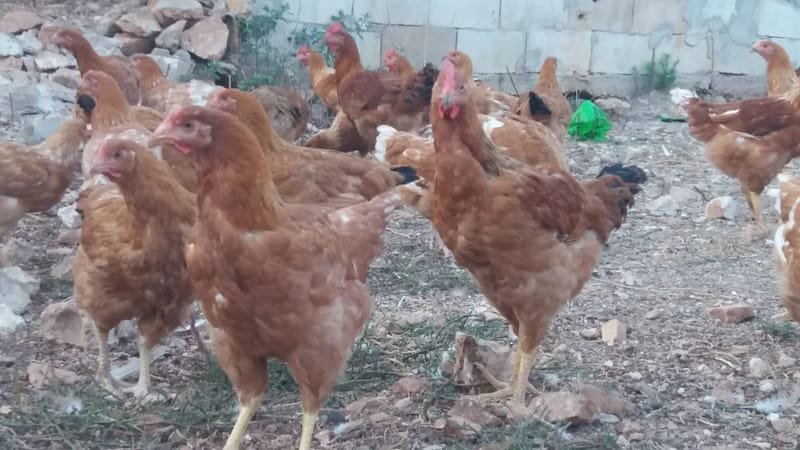Poultry

Prior to the start of the economic hardship environment in Lebanon about a year ago, Lebanon was an exporter of chicken eggs in addition to fulfilling domestic market needs of egg consumption. Lebanon also had fresh poultry meat production to meet domestic demand, but was an importer of chilled and frozen chicken meat.
The economic hardship resulted in 8-10-fold increase in poultry egg and meat prices, which prompted many farmers in rural areas to consider raising own chicken for egg and meat consumption, and possibly for some additional source of income. On the other hand, the economic downturn made the closure of a number of the commercial poultry production farms a real possibility.
The dynamics of poultry production in rural areas changed significantly over the past year rendering its status, extent, and dimensions, to be ill-defined at this point.
Field Study
To better understand the landscape of poultry production at the small farmer scale in rural Lebanon, ARP conducted a study in 22 villages of Qaza Nabatiyeh. The study started in early November 2020 and targeted farmers who 1) Are already raising 20 or more chicken (Indicator for farmer investing capital to improve family consumption + secure some additional income), and 2) Do not have monthly income exceeding 2 million LP from other sources.
A field team of 5 agricultural assistants participated in conducting the study. Data from 433 farmers was entered into a MS-Access database, and provided the following preliminary profile:
- Data from 22 villages on 433 farmers who own over 16,000 chicken.
- Their total egg production exceeds 27000 eggs per week, an average of 2.32 eggs per hen, 88 eggs per farmer per week.
- The estimated coop area per chicken was 0.52 m2,
- 88.2% of farmers rely on breeding their own chicks, but only 2% of them vaccinate their chicks.
- These farmers use an average monthly commercial feed consumption of 2.6 kg per chicken.
- The farmers lost over the past year, the equivalent to 17.3% of their current ownership, for an average loss of 7 chicken per farmer.
Based on the preliminary results, we project that this pool of farmers to own over the coming 12 months about 20,000 chicken, and have a total production of about 40,000 eggs per week (2.6 million eggs annually); which is equivalent to a mid-sized poultry farm distributed over 22 villages and 433 farmers.
Based on the preliminary study data, we outlined the following intervention approach:
1. Goals
- Enhance chicken health and immunity through clean water and habitat, and immunity boosting natural feed and supplements.
- Increase chicken meat and egg production through a long-term program for male and female chicken renewal.
- Increase chicken count to 50 or higher per farmer to provide eggs and meat based on an annual goal set by the farmer family and extra egg production for sale and income generation.
2. Major areas of assistance to the farmer (In order of priority)
- Provide automatic waterers and feeders, and immunity boosting supplements added to drinking water and/or feed
- Formulate a program for introducing natural nutritional feeds to reduce commercial feed over 3 years over 50%
- Implement a program to enhance clean and healthy living habitat for improved chicken care and hygiene, with utmost focus on public health hazards poultry and their products may constitute to the spread of infectious disease.
- Establish a farmer-based program for chicken renewal and gender mix, based on goals set for the family meat and egg consumption, additional income, and breeding preferences; while introducing higher production layers into the mix.
- Veterinary support based on a need-to-basis access to a veterinarian, with focused on preventative aspects of handling of chicken and their eggs.
- Assist with measures to promote chicken well-being through availability of nesting boxes, feeders, sleep perches, and protection from environmental hazards, disease, and predators.
- Secure venues for marketing of egg and meat products at the local, domestic, and export levels.
3. Long-Term
Expand program to other areas to include more farmers following the same methodology driven by promoting food security and increased income driven by: SURVEY - PLAN - ASSIST
